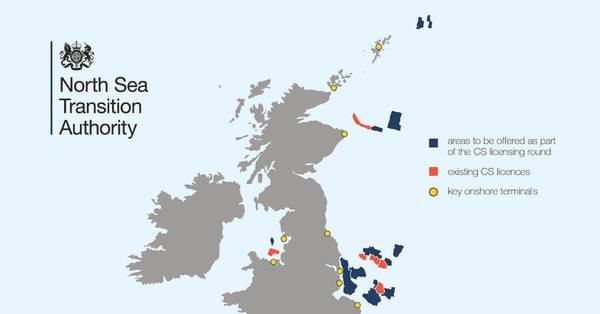
The UK-based North Sea Transition Authority (NSTA) on Tuesday launched UK’s first-ever carbon storage licensing round with 13 areas available.
"The new carbon storage areas, alongside the six licences which have been issued previously, could have the ability to make a significant contribution towards the aim of storing 20-30 million tonnes of carbon dioxide (CO2) by 2030," the NSTA, formerly known as the
The areas being offered for licensing are off the coast of Aberdeen, Teesside, Liverpool and Lincolnshire in the Southern North Sea, Central North Sea, Northern North Sea, and East Irish Sea and are made up of a mixture of saline aquifers and depleted oil and gas field storage opportunities.
"This round is envisaged to be the first of many as it is estimated that as many as 100 CO2 stores could be required in order to meet the net zero by 2050 target," the NSTA said.
"Carbon capture and storage (CCS) involves the capture of CO2 emissions from industrial processes and will play a crucial role in decarbonising the UK’s major industrial hubs such as Teesside and Humberside. This CO2 is then transported from where it was produced, via ship or in a pipeline, and stored offshore, deep underground in geological formations," the NSTA said.
The NSTA said that CO2 will typically be stored at depths greater than 800 metres, where it no longer behaves as a gas, but instead as a supercritical fluid. The same geological formations that are well understood in the UK from many decades of oil and gas production, such as the Triassic Bunter Formation and Tertiary Forties Sandstones, are also likely to be ideal for the storage of carbon dioxide.
According to the NSTA, the level of interest already expressed suggests there will be strong competition meaning that prospective licensees will need to produce high-quality bids to win licences.
The application window is open for 90 days, closing on 13 September, and will be evaluated by the NSTA on technical and financial criteria.
New are expected to be awarded in early 2023.
"The size and scale of the licensed stores mean that they are likely to proceed at different paces, but first injection of CO2 could come as early as four to six years after the licence award," the NSTA said.